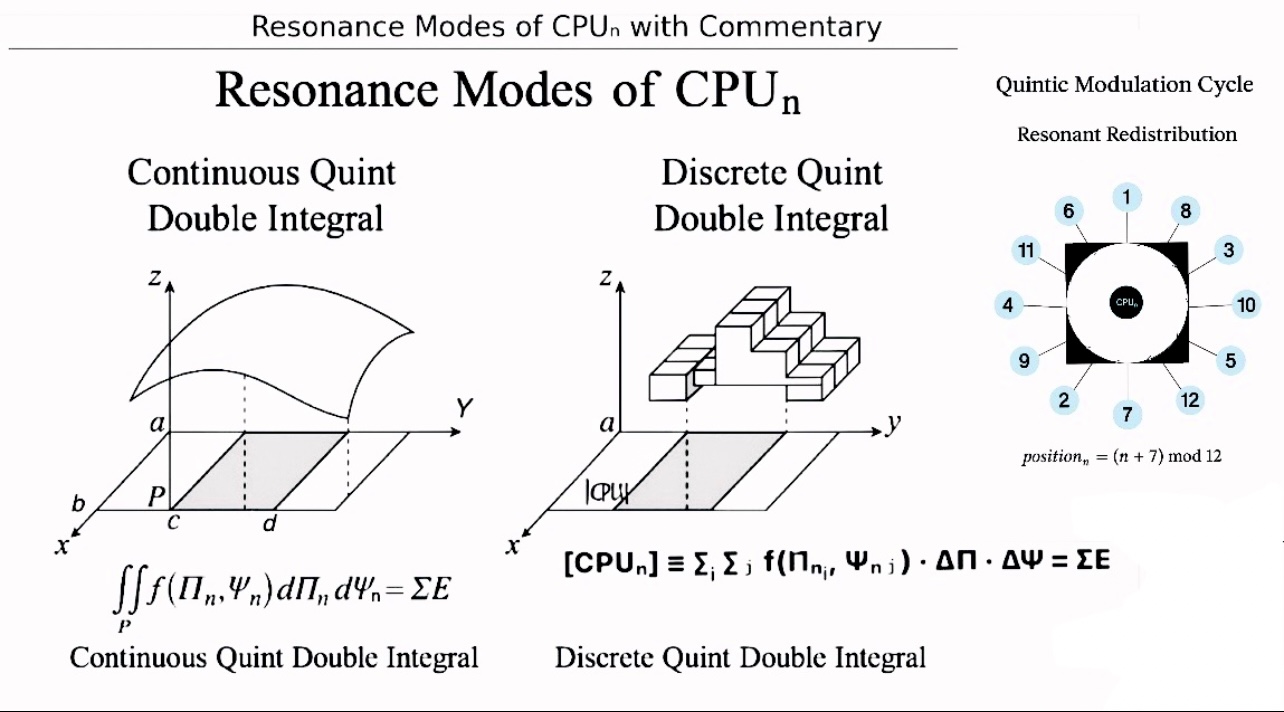About Xrealism
By its very concept, Xrealism as a movement represents the strengthening and consolidation of the existence of our conscioperceptual unit through the intention of preserving its freedom, by rejecting boundaries (both internal content and external impositions), in the abandonment of previous spatial limitations.
The form of Xrealism is the freedom of the conscioperceptual unit. With it, we race along the lines of infinity.
This freedom unfolds in conscioperceptual resonance,
not in form — but in function.
Resonant Modes of CPUₙ

This section introduces the integral dynamics of CPUₙ in the quintic field 𝕏. The resonant flow between consciousness (Ψₙ) and perception (Πₙ) is mathematically expressed through the quintic double integral.
Within the Xrealist model of consciousness, the quintic double integral is not merely a mathematical tool for calculating volume in an abstract space, but is interpreted as the resonant operator of the conscioperceptual unit (CPUₙ). Rather than integrating a function over spatial coordinates, the CPUₙ integrates energetic contributions between perception (Πₙ) and consciousness (Ψₙ) within the quintic resonant domain 𝕏.
The fundamental continuous formula is:
∬ₚ f(Πₙ, Ψₙ) dΠₙ dΨₙ = ΣE
Here, the domain “P” designates a resonant quintic region not statically defined in space, but dynamically formed through the operational activity of the CPUₙ. The differentials dΠₙ and dΨₙ are not ordinary infinitesimal changes, but reflect deep modulations of perception and consciousness in a resonant configuration. The function f(Πₙ, Ψₙ) does not exist independently of the CPUₙ—it arises from the directed relation between inner consciousness and outer perception in a resonant moment.
The quantity ΣE resulting from the integration does not represent volume in the Euclidean sense, but rather denotes the total phenomenal presence—the energetic result of a single act of consciousness within a specific quintic configuration.
Alternatively, the CPUₙ can be represented in a discretized form:
⟦CPUₙ⟧ ≡ ∑ᵢ ∑ⱼ f(Πₙᵢ, Ψₙⱼ) × ΔΠ × ΔΨ → Σ⟦E⟧
This expression describes a quintic grid composed of discrete resonance points. Each point (Πₙᵢ, Ψₙⱼ) corresponds to a local encounter between perception and consciousness, while ΔΠ and ΔΨ maintain the quintic ratio of perception to consciousness (2:3). In this sense, each quintic unit represents an energetic segment of meaning, which the CPUₙ collects and resonates.
In Xrealism, both the continuous and the discrete variants belong to the vertical axis of CPUₙ operation. This is the depth dimension through which the CPUₙ dives into the local content of the world and stabilizes meaning.